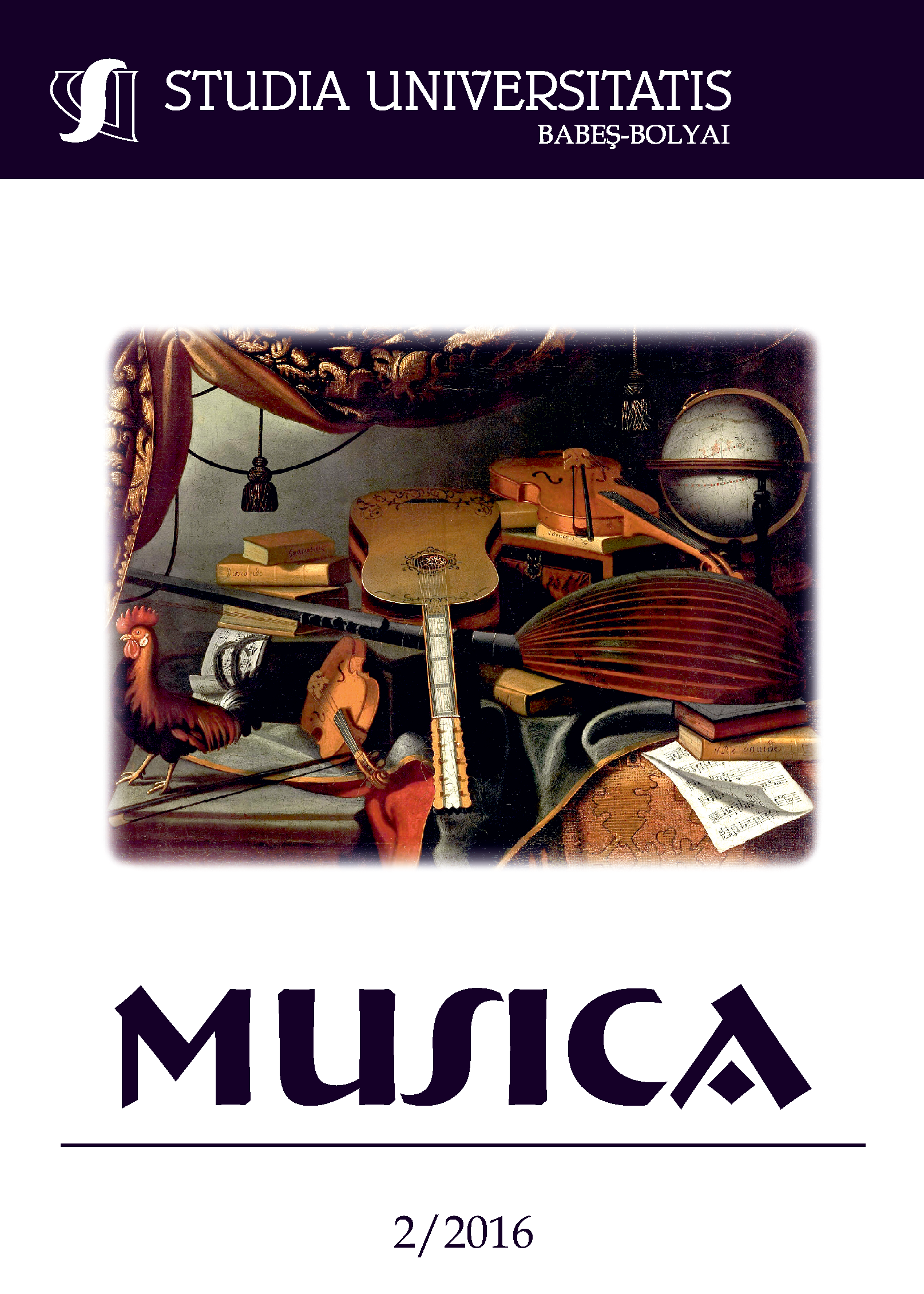LISZT - PORTRAIT OF A MUSICIAN. “DANTE SYMPHONY”
Keywords:
Dante Symphony, programmatic music, Franz Liszt, Gregorian chantAbstract
It is well known the fact that Liszt’s programmatic music does not describe something concrete but rather suggests the feelings triggered by a certain action, theme, landscape or artwork. One of the first statements about Liszt’s intention of writing the Dante Symphony exists in a letter addressed to Richard Wagner, in which the composer confessed: “Like Virgil led Dante, you showed me the way trough the mysterious regions of a lively world of sounds. I say to you wholeheartedly: Tu sei lo mio maestro, e il mio autore – and I dedicate this work to you with all my everlasting love, Weimar – Ostern – 1850. Yours, F. Liszt”[1] In the same letter the author adds, “and if you do not disapprove, I will encrypt your name”[2]. This study aims to reflect the way in which the composer identifies himself with the main character of the Symphony, transcending this journey of creation further than reflected in his other works, in this way transforming the whole opera into an allegoric self portrait. The Symphony presents the protagonist Liszt-Dante starting a fascinating and at the same time terrifying journey through Inferno-Purgatorio and Paradiso, reflecting, probably more than in any other work of his that every note is like a confession of his own personal religious beliefs.
[1] Correspondence between Wagner, Liszt, II, 7,1, cf. Raabe, Peter – Vorwort Dante-Symphonie, Verlag von Breitkopf & Härtel, Leipzig, Berlin, Brüssel, 1921, p. 3
[2] Ibid.
References
*** The New Grove’s Dictionary of Music and Musicians, Ed. Stanley Sadie, Macmillan Publishers, London, 1980.
Alighieri, Dante, Divina comedie, (Divine Comedy), Editura pentru Literatură Universală, Bucureşti, 1965.
Angi, Ştefan, Prelegeri de estetică, (Lectures in aesthetics), Academia de Muzică Gh. Dima, Cluj-Napoca, 1999, 2000, vol. I, II.
Balla Kemenes, Csilla, Retorica muzicală a discursului pianistic din epoca Romantismului,( The rhetoric of piano music discourse in the Romantic era), Doctoral disertation, Academia de Muzică „Gh. Dima”, Cluj-Napoca, 2005.
Bălan, Theodor, Franz Liszt, Editura Muzicală a Uniunii Compozitorilor din R.P.R., Bucureşti, 1963.
Boeriu, Eta, Poezia sunetelor în „Divina Comedie” (Sound poetry în the Divine Comedy) în Lucrări de muzicologie,(Musichology works), vol. XVI, Cluj-Napoca, 1984.
Dufrenne, Mikel, Poeticul, (The poetic), Editura Univers, Bucureşti, 1971.
Hamburger, Klára, Liszt kalauz, (Liszt guide), Zenemükiadó, Budapest, 1986.
Liszt, Franz, Dante-Symphonie, Verlag Breitkopf & Härtel, Leipzig, Berlin, Brüssel, 1921.
Liszt, Franz, Pagini romantice, (Romanthical pages) Bucureşti, 1985.
Liszt, Franz, Life of Chopin, http://www.gutenberg.org/files/4386/4386-h/4386-h.htm
Michaud, Octave, Pianul pe înţelesul tuturor, (Piano Explained), Editura Prietenii cărţii, Bucureşti, 2002.
Raabe, Peter, Vorwort [zur Dante-Symphonie], (Foreword of Dante Symphony), Verlag Breitkopf & Härtel, Leipzig, Berlin, Brüssel, 1921.
Ştefănescu, Ioana, O istorie a muzicii universale, (A history of world music), Editura Fundaţiei Culturale Române, Bucureşti, 1998, vol III.
Downloads
Published
How to Cite
Issue
Section
License
Copyright (c) 2016 Studia Universitatis Babeș-Bolyai Musica

This work is licensed under a Creative Commons Attribution-NonCommercial-NoDerivatives 4.0 International License.



